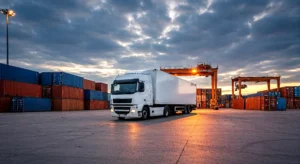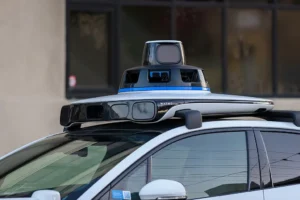Halloween is more than just a celebration; it is an economic engine that generates billions in spending.
In the United States, Halloween is one of the most anticipated celebrations of the fall season, and like any celebration, shopping plays a key role. This holiday has become a significant economic phenomenon at the national level. Local businesses and large manufacturers form a strong network that provides everything families and communities need to enjoy the occasion. Additionally, the freight transportation industry plays a crucial role in this chain, ensuring that the night of October 31st comes to life.
The role of Halloween in the U.S. economy is such that the National Retail Federation (NRF) annually reports the projected total spending for the celebration. This year, spending is projected to reach $11.6 billion, surpassing pre-pandemic levels. Furthermore, according to surveys conducted by the NRF, 72% of the population plans to celebrate in some way. Among the most popular activities:
- 77% of celebrants intend to buy decorations
- 67% will hand out candy
- 49% will dress up
This highlights not only the festive spirit but also the economic impact of the celebration.

Influence of Halloween on the U.S. economy
According to NRF surveys, consumers will turn to various stores to meet their Halloween needs, with 37% shopping at discount stores, 33% online, and another 33% at specialty shops. Additionally, 28% plan to shop at supermarkets. This consumption pattern not only supports retail businesses but also boosts the manufacturing and logistics industries, making Halloween a significant economic driver.
Further data shared by the Federation reveals a trend toward early shopping, as 47% of consumers start buying before October. On average, consumers plan for Halloween 5.2 weeks in advance, prompting stores like Home Depot to promote Halloween items as early as April, marking a shift in commercial strategy.
Moreover, the supply chain is essential for Halloween to run smoothly. This means that delivery drivers and workers operate at a faster pace, though they still do not reach December levels. However, it is clear that the collective effort drives the festivities and, above all, the U.S. economy.

Projected total Halloween spending
In 2023, per-person spending reached a record of $108.24. This year, NRF data projects spending of $104 per person, totaling around $11.6 billion. While the largest expenditures go to costumes and candy, most Halloween celebrants focus primarily on acquiring their costumes.
According to NRF projections, total spending is expected to be as follows:
- $3.8 billion on costumes
- $3.8 billion on decorations
- $3.5 billion on candy
- $500 million on festive cards
The U.S. Chamber of Commerce emphasizes that Halloween is more than just a celebration; it is an economic engine that generates billions in spending and showcases the creativity of American businesses. Both medium and large companies, as well as drivers and other sectors, contribute to making this holiday a reflection of the dynamism of the country’s economy.

Trucking faces continued job losses as 2026 uncertainty looms
The U.S. trucking industry continues to lose jobs and reduce capacity, will this trend continue in 2026? The U.S. trucking industry continues to lose jobs

U.S. Allocates $1.5 Billion for Truck Road Infrastructure
The 2026 BUILD Grants program will invest $1.5 billion in truck road infrastructure across highways, ports, and truck parking facilities, with direct impact on logistics and freight transportation in the United States.

Wall Street Record: Transportation Stocks Boost Confidence in the Economy and Logistics
Transportation stocks in the United States have staged a strong rally so far in 2025, reflecting growing market confidence in the real economic activity behind logistics, freight movement, and mobility services more broadly.

The meaning of Hanukkah and how to celebrate it on the road
Hanukkah is a celebration of resilience and hope, and here are some ways you can take this on the road. December is one of the

Waymo under investigation for potential safety risk in school zones
A recent wave of videos has shown that some Waymo vehicles are not complying with safety regulations in school zones. The autonomous vehicle company Waymo,

Don’t Blame the Snow: The Real Causes Behind Winter Truck Accidents
Don’t Blame the Snow: Why Most Winter Truck Accidents Are Preventable
